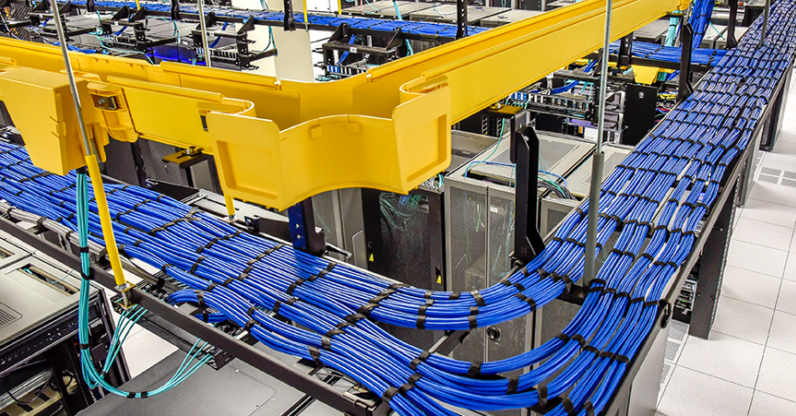
“We build our computer systems the way we build our cities: over time, without a plan, on top of ruins.” – Ellen Ullman
If this sounds like your data center, it’s time for a change. That bird’s nest of cables costs you a little bit more every day in energy and productivity. Here’s why:
Air Damming & Higher Temperatures
Air damming occurs when haphazardly installed equipment and cabling block air flow within a data center deployment. This prevents hot air from being properly expelled through the exhaust system, and blocks new, cool air from flowing in. In many cases, a company is already using a data center that has all the proper cooling equipment and systems in place, but they are not taking advantage of that capacity by not following structured cabling best practices. In many cases, fixing heating issues doesn’t warrant the purchase of new equipment, rather the deployment needs re-cabling. If it isn’t addressed, overheating can result in equipment failure and downtime.
Network Latency
Not only do continual high temperatures cause alarms on network hardware to constantly go off, but it also leads to accelerated degradation of the cabling. Data Foundry’s senior network engineer, William Knobles, says, “This may eventually lead to network performance issues, up to and including catastrophic hardware failure.”
Overcrowded data center cabling isn’t the only cabling issue that can cause network problems. Low-quality or old patch cables can result in network latency. For example, if you’re using category 5e cables somewhere in your deployment and trying to push 10G, your cabling will prevent you from reaching the network speed you want to achieve, and using the bandwidth you are paying for.
Lastly, if inexperienced technicians cabled your deployment, your network could be suffering from signal degradation due to insertion loss. Technicians who aren’t certified to splice cables likely won’t do as good a job of splicing to achieve minimum insertion loss. The higher the insertion loss, the more the signal degrades and the slower the network will be.
Troubleshooting Data Center Cabling
When you don’t know where cables begin and end, it makes troubleshooting in the data center much more time consuming. Data center deployments that are not cabled according to best practices lack “to” and “from” labels at each end of cables. This can result in technicians having to spend hours figuring out where cables are going before they can fix a problem.
Upgrading & Future-Proofing
We’ve seen cables being run across existing hardware, essentially blocking it from being removed for maintenance or upgrades without having to unplug all the cables. Senior network engineer Knobles, says, “Adding additional cables for upgrades without any plan on how to manage the overall cable volume results in a mass of cabling that prevents network hardware from properly exhausting excess heat, and may impact physical access to network hardware.” If data center footprints aren’t set up and cabled for high-density growth from the beginning, overheating and downtime are sure to follow as more equipment is added. Basically, they aren’t future-proof.
In conclusion, messy cabling raises energy costs by raising data center temperatures. It can also cause network latency which results in productivity loss and unhappy users. Lastly, troubleshooting and upgrades take significantly longer than they would if everything were neatly organized and labeled. This can mean a difference of several hours of downtime, which costs most companies several thousands of dollars per minute.
Data Foundry’s structured cabling team has helped many companies optimize their data center footprints by decreasing temperatures, reducing troubleshooting time, future-proofing infrastructure and increasing network efficiency. Read our case study on cabling Mattress Firm’s data center footprint to learn more.
